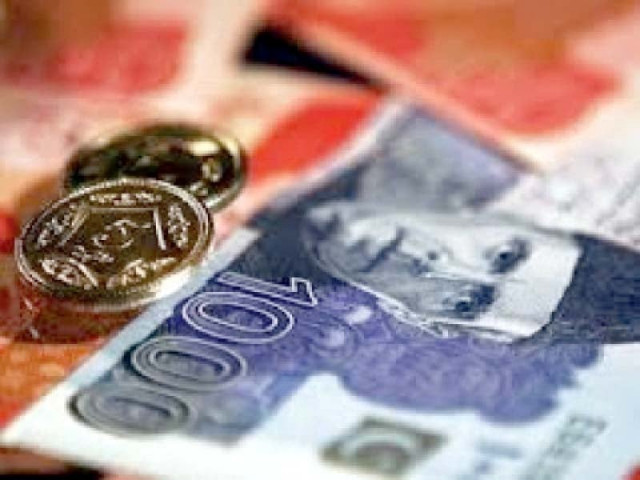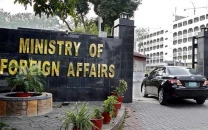SBP jacks up key rate to 14-year high of 15%
Acting SBP governor says economic growth is projected to slow down to 3-4%

The State Bank of Pakistan (SBP) further tightened its monetary policy on Thursday, jacking up key policy rate by 125 basis points to a 14-year high of 15% with a view to controlling inflation, easing unnecessary pressure on the rupee and cutting current account deficit.
Announcing the monetary policy statement (MPS) for the next six weeks, acting SBP Governor Dr Murtaza Syed said economic growth was projected to slow down to 3-4% in the current fiscal year, 2022-23, while inflation reading was expected to remain in a high range of 18-20%.
“We will try our best not to let inflation increase beyond these levels – 18-20% – in FY23 through controlling it on a month-on-month basis,” Syed said, while speaking at an online press conference on the central bank’s premises.
Syed asked the authorities concerned to improve agriculture output to achieve food security, as “controlling imported food and energy inflation through monetary policy tool was beyond the central bank’s control”.
With the latest increase, the central bank has cumulatively increased the policy rate by 800 basis points in the past 11-month, or since September 2021. “We have taken the measure [increase in policy rate] on time. A delay might cause hyperinflation in Pakistan,” he said.
Syed stressed that the country’s actual potential for economic growth stood at 4-5% per annum. “We have achieved 6% growth for the past two consecutive fiscal years [FY21 and FY22] through providing [fiscal and monetary] stimulus packages,” he said.
The stimulus-led economic growth has partly contributed towards high inflation and high current account deficit. Besides, high global commodity prices have partly played a role in overheating the domestic economy.
Pakistan is not alone in facing the high inflation, rather the entire world is experiencing such a phenomenon after a gap of 50-60 years. The SBP chief said that they were “increasing the interest rate to deal with” this situation.
Pakistan is engaged with the International Monetary Fund (IMF) on a day-to-day basis and negotiation for revival of loan programme “have entered into final phase,” Syed confirmed, while responding to a query.
He added that the country’s foreign exchange reserves were estimated to improve to a minimum three-month import cover level in FY23.
The central bank also announced linking the policy rate with subsidised financing to exporters. Accordingly, the interest rate on export finance scheme (EFS) and long-term financing facility (LTFF) would remain 500 basis points lower compared to key policy rate.
“Therefore, the rates on EFS and LTFF are being revised up to 10% each [for the next six weeks],” SBP Deputy Governor Sima Kamil said at the press conference.
Pakistan’s strong economic rebound from Covid continues with the level of output surpassing pre-pandemic levels, unlike in many other emerging markets.
The needed moderation in economic activity that was occurring throughout the FY22 in response to monetary tightening has stalled in the last three months, fuelled by an unwarranted fiscal expansion.
Most demand indicators suggest a robust growth since the last MPC—sales of cement, POL and automobiles increased month-on-month — and growth in large-scale manufacturing (LSM) remains high.
Energy import bill
The SBP policy statement, meanwhile, said that non-energy imports had continued to be moderate in the last three months on the back of curtailment measures by the government and the SBP.
However, it added, the decline had been “more than offset by the significant increase” in energy imports, which rose from a low of $1.4 billion in February “to an estimated record high of $3.7 billion in June”.
While this [high energy import bill] partly reflected higher prices, the policy statement continued, the significantly higher volumes of petroleum also played a significant role.
Without prompt additional measures to curtail energy imports – for instance early closure of markets, reduced electricity use by residential and commercial customers, and greater encouragement of work from home and car pooling, “containing the trade deficit could become challenging.”
With such measures, the current account deficit is projected to narrow down to around 3% of gross domestic product (GDP) as imports moderate with cooling growth, while exports and remittances remain relatively resilient.
“The expected completion of the on-going IMF review will catalyse important additional funding from external sources that will ensure that Pakistan’s external financing needs during FY23 are met,” the statement said.
“Pressures on the rupee should then attenuate and the SBP’s FX [foreign exchange] reserves should gradually resume their previous upward trajectory during the course of FY23,” the statement added.
Headline inflation rose significantly from 13.8% year-on-year in May to 21.3% in June – the highest since 2008. The increase was broad-based — with energy, food and core inflation all rising significantly.
More than 80% of the items in the consumer price index (CPI) basket are experiencing inflation of above 6%. Strong domestic demand and second-round effects of supply shocks are reflected in the rise of core inflation to 11.5% in urban areas and 13.5% in rural areas.



















COMMENTS
Comments are moderated and generally will be posted if they are on-topic and not abusive.
For more information, please see our Comments FAQ